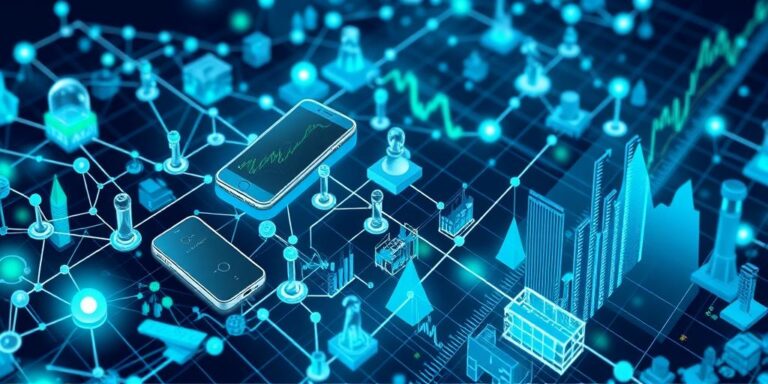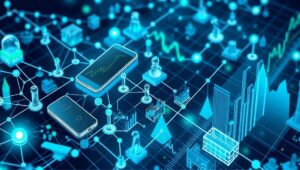The Economics of IoT: Monetizing Data and Services (Post-2025)
The Internet of Things (IoT) is rapidly evolving from a concept to a ubiquitous reality, connecting billions of devices and generating massive amounts of data. While the initial focus was on enabling connectivity and collecting data, the emphasis is now shifting towards monetizing these assets. This post explores the economic landscape of IoT post-2025, focusing on strategies for monetizing data and services.
The Evolving IoT Landscape
By 2025, the IoT ecosystem will be characterized by:
- Ubiquitous Connectivity: 5G and Wi-Fi 6 will provide faster, more reliable connections, enabling seamless data transfer between devices.
- Advanced Analytics: AI and machine learning will play a crucial role in analyzing IoT data, extracting valuable insights, and automating decision-making.
- Edge Computing: Processing data closer to the source will reduce latency, improve security, and enable real-time applications.
- Enhanced Security: Robust security measures will be essential to protect IoT devices and data from cyber threats.
Monetizing IoT Data
Data is the new oil, and IoT data is no exception. Here are several ways to monetize IoT data:
- Data Aggregation and Sales:
- Concept: Collect data from multiple IoT devices and sell aggregated, anonymized datasets to third parties.
- Example: A smart city collects data from traffic sensors, environmental monitors, and public transportation systems. This data can be sold to urban planners, transportation companies, and environmental organizations.
- Data-Driven Services:
- Concept: Use IoT data to offer value-added services to customers.
- Example: A manufacturer uses data from sensors on its equipment to offer predictive maintenance services, reducing downtime and improving efficiency for its customers.
- Personalized Recommendations:
- Concept: Analyze user data from IoT devices to provide personalized recommendations and offers.
- Example: A smart home system analyzes energy consumption patterns to recommend energy-saving tips or suggest optimal thermostat settings.
- Insights as a Service (IaaS):
- Concept: Provide customized insights and analytics to businesses based on their specific needs.
- Example: A logistics company uses IoT data from its fleet of vehicles to provide real-time tracking, optimize routes, and improve delivery times for its clients.
Monetizing IoT Services
In addition to data, IoT services offer significant monetization opportunities:
- Subscription-Based Services:
- Concept: Offer IoT services on a subscription basis, providing ongoing value to customers.
- Example: A security company offers a smart home security system with 24/7 monitoring and remote access for a monthly fee.
- Pay-Per-Use Services:
- Concept: Charge customers based on their usage of IoT services.
- Example: A shared mobility service charges users based on the distance traveled and time used.
- Value-Added Features:
- Concept: Offer premium features or functionalities for an additional cost.
- Example: A smart agriculture company offers advanced analytics and predictive modeling as an add-on service to its basic platform.
- Ecosystem Partnerships:
- Concept: Collaborate with other companies to create comprehensive IoT solutions and share revenue.
- Example: A healthcare provider partners with a wearable device manufacturer to offer remote patient monitoring services.
Challenges and Considerations
Monetizing IoT data and services is not without its challenges:
- Data Privacy and Security: Protecting user data is paramount. Companies must comply with regulations such as GDPR and CCPA and implement robust security measures to prevent data breaches.
- Data Quality: Ensuring the accuracy and reliability of IoT data is crucial for generating valuable insights.
- Interoperability: Standardizing protocols and data formats is essential to enable seamless integration between different IoT devices and platforms.
- Scalability: IoT solutions must be scalable to accommodate the growing number of connected devices and increasing data volumes.
Examples of Successful IoT Monetization
Several companies have successfully monetized IoT data and services:
- Tesla: Uses data from its connected vehicles to improve autonomous driving capabilities, offer over-the-air software updates, and provide personalized insurance services.
- John Deere: Leverages data from its agricultural equipment to offer precision farming solutions, optimizing crop yields and reducing costs for farmers.
- Philips: Utilizes data from its connected lighting systems to provide smart city services, such as adaptive lighting and traffic management.
The Future of IoT Economics
The economics of IoT is poised for significant growth in the coming years. As the number of connected devices continues to increase and data analytics capabilities advance, the opportunities for monetizing data and services will only expand. Companies that can effectively address the challenges and capitalize on the opportunities will be well-positioned to thrive in the evolving IoT landscape.
By focusing on data-driven services, subscription models, and strategic partnerships, businesses can unlock the full economic potential of IoT and create new revenue streams. The future of IoT economics lies in the ability to transform raw data into actionable insights and valuable services, driving innovation and creating value for businesses and consumers alike.




